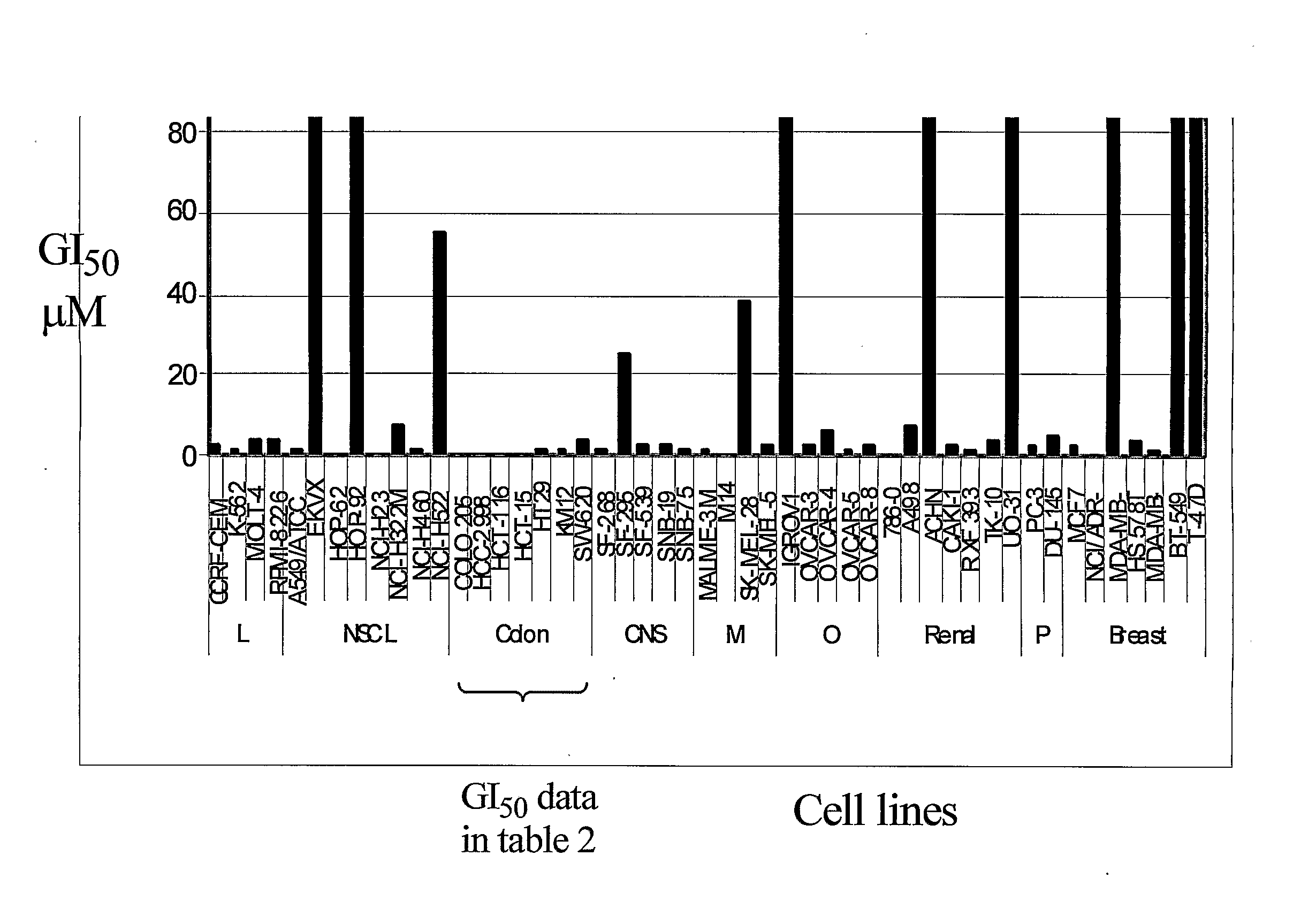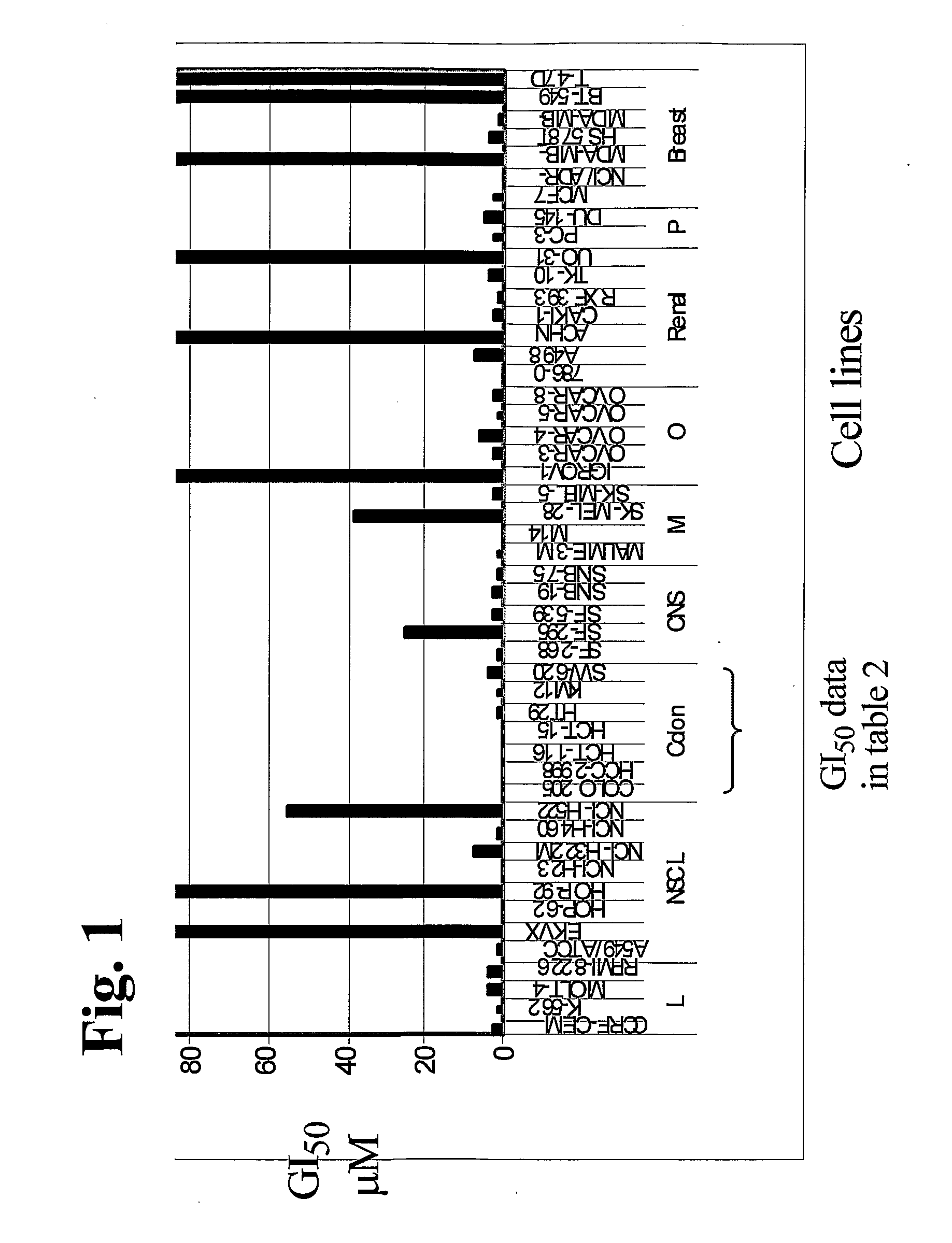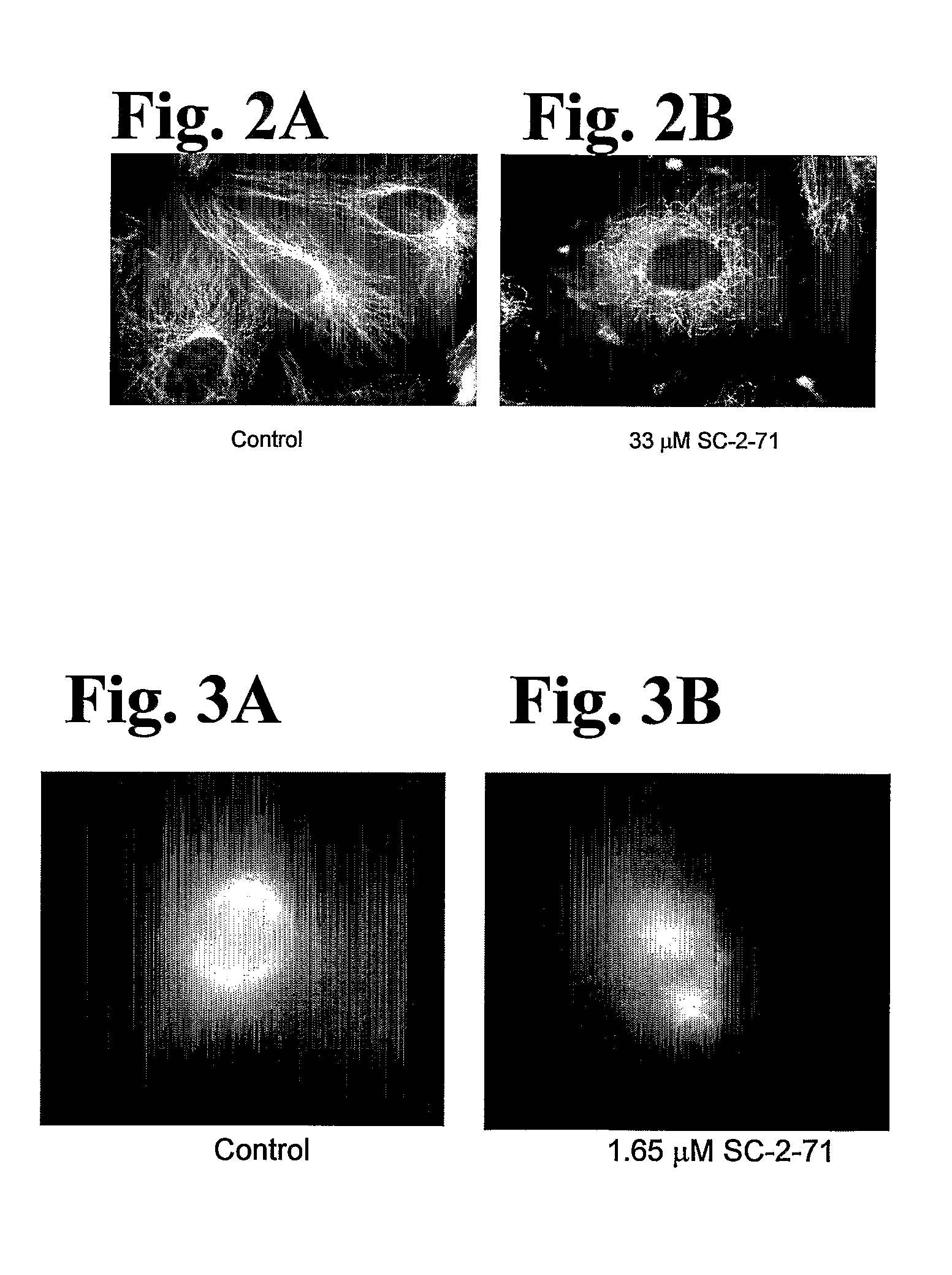Dual Small Molecule Inhibitors of Cancer and Angiogenesis
a small molecule inhibitor and angiogenesis technology, applied in the direction of muscular disorder, cardiovascular disorder, drug composition, etc., can solve the problems of affecting the function of microtubules, affecting the survival rate of patients, and affecting the ability of microtubules to function normally, so as to inhibit the activity of vascular endothelial cells
- Summary
- Abstract
- Description
- Claims
- Application Information
AI Technical Summary
Benefits of technology
Problems solved by technology
Method used
Image
Examples
example 1
SC-2-71 Effects on Proliferation
[0194] SC-2-71 was evaluated against human cultured cell lines in the NCI Anticancer Drug Development Program. The data provided below in Table 2 reveals that SC-2-71 is a potent inhibitor of colon cancer proliferation with anti-proliferative activities ranging from 68 nM to 4 μM. This includes potent inhibition of colon cancer cells from primary tumors, distal metastasis and ascites fluid.
TABLE 2GI50 summary for human colon cell lines treated with SC-2-71.GI50 Data (μM)HCC-HCT-SW-CompoundHT29COLO2052998116HCT-15KM12620SC-2-7110.90.0680.50.424Vincristinea0.110.120.110.120.140.120.115FUa6.77.21.44.05.811.126.2
aNCI data. 5FU = 5-Fluorouracil
[0195] Further grade III tumor cells (HCT116) were also significantly inhibited (GI50 500 nM). In comparison to 5-FU (currently approved for stage III colon cancer), SC-2-71 was significantly more effective at inhibiting human colon cancer cell lines. SC-2-71 had similar potency as compared to Vincristine, a well...
example 2
Comparative Molecular Field Analysis (CoMFA) of SC-2-71 and Tubulin Polymerization
[0202] CoMFA is a powerful ligand based discovery methodology to identify important relationships between steric and electrostatic molecular properties and biological data. A β-tubulin CoMFA has been developed that resulted in models which were predictive of both tubulin polymerization and [3H]colchicine binding for a large set of β-tubulin inhibitors (Brown, et al., Bioorganic and Medicinal Chemistry, 8:6:1433-1441, 2000). This study produced the first predictive models for multiple structural types including combretastatins, colchicine and podophyllotoxin. More recently, this CoMFA model was used to identify and predict the β-tubulin depolymerization activity of SC-2-71. The CoMFA model predicted that SC-2-71 would be a potent inhibitor of tubulin polymerization as was previously reported for the parent HAMEL4 compound (Hour et al., Journal of Medicinal Chemistry, 43:23:4479-87, 2000).
[0203] SC-2-7...
example 3
Investigating the SC-2-71 Mechanism of Action
[0206] A 96% sequence homology (identity) exists between the x-ray structure sequence of β-tubulin (bovine brain) and βIII (human) (see FIG. 5). With this high level of homology, we embarked on developing a protein model of human βIII (FIG. 6B). Using the BIOPOLYMER module within SYBYL we threaded the sequence in FIG. 5 into the reported x-ray structure to create the homology model of βIII human tubulin (FIG. 6). We then took our homology model of βIII and flexible docked SC-2-71 into it using the FlexX / C-Score module within SYBYL (FlexX was developed at the German National Research Center for Information Technology (GMD), and is distributed by Tripos Inc., St. Louis Mo.; ww.tripos.com / software / flexx.html). SC-2-71 docks right into the area of greatest amino acid difference near the taxol and colchicine binding sites (FIG. 6). Overlap of the homology with the x-ray structure revealed that changes in amino acids resident in the βIII prote...
PUM
| Property | Measurement | Unit |
|---|---|---|
| w/w | aaaaa | aaaaa |
| droplet size | aaaaa | aaaaa |
| structure | aaaaa | aaaaa |
Abstract
Description
Claims
Application Information
 Login to View More
Login to View More - R&D
- Intellectual Property
- Life Sciences
- Materials
- Tech Scout
- Unparalleled Data Quality
- Higher Quality Content
- 60% Fewer Hallucinations
Browse by: Latest US Patents, China's latest patents, Technical Efficacy Thesaurus, Application Domain, Technology Topic, Popular Technical Reports.
© 2025 PatSnap. All rights reserved.Legal|Privacy policy|Modern Slavery Act Transparency Statement|Sitemap|About US| Contact US: help@patsnap.com



